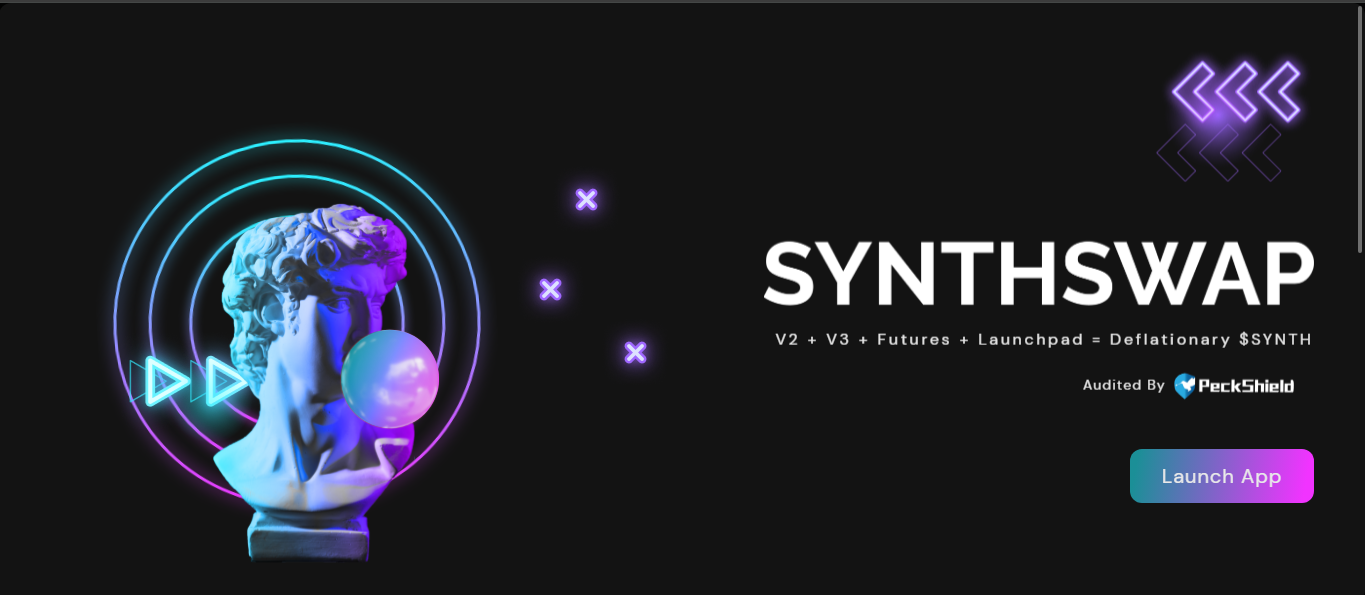SynthSwap Review - synthetic ambitions slowed by liquidity and trust gaps

SynthSwap offers a way to trade synthetic versions of real-world and crypto assets on Arbitrum, touting features like leveraged synthetic positions, decentralized collateral pools, and community vote-driven asset listings. It presents itself as a bridge between traditional markets and DeFi. But beneath its polished UI, things feel underpowered: price feeds wobble, collateral is thin, and there’s little public proof of solidity.
A unique concept in practice: DeFi meets pseudo stocks
Unlike standard DEXs, SynthSwap isn’t about swapping tokens directly. You mint synthetic assets - think sBTC, sTSLA, or sETH - using collateral, borrow against them, or trade long/short positions. It mixes leverage with synthetic crypto derivatives, low gas costs, and a token farm. If it worked reliably, it’d be a compelling option for DeFi-savvy users wanting access to off-chain markets in a decentralized way. Yet the actual experience falls short.
The first glance: slick design, limited activity
Opening SynthSwap, you’re met by a clean dashboard showing pools, minting options, trade buttons, price charts, and governance sections. The platform feels modern. You connect your wallet, deposit collateral (typically USDC), and open trades. Farming options let you stake the platform’s SYT token. But that polished look masks deeper issues: pricing anomalies, low pool depth, and ghost-like trade volume.
Price reliability: synthetic firms show cracks
One of the most important points for a synthetic platform is price accuracy. SynthSwap uses decentralized oracles, and occasionally, price lags create small but noticeable gaps. If you mint or trade too quickly, or during volatile moves, slippage or mismatched asset values can hit hard. Experienced users demand reliable pricing - without it, synthetic trading is risky.
Collateral pools: attractive yields, but dangerously thin
The yield farming section advertises attractive APYs for SYT stakers, and collateral pools seem appealingly open. In practice, TVL is modest - often tens of thousands of dollars rather than millions. That thinness makes leveraged positions fragile. If a big trade hits, liquidation or margin call conditions can trigger fast and unpredictably, risking instability in value and execution.
Community and governance: lightweight presence
SynthSwap allows token holders to vote on which assets to list and how to manage pools. It’s a nice concept, but the community remains small. Proposals are few, voting participation is low, and roadmap updates are scarce. Without an active contributor network, development stagnates and decisions don’t reflect a broader ecosystem.
Security and transparency: trust remains uncertain
Security in synthetic-decentralized finance is non-negotiable. But SynthSwap shows no public audit reports, no third-party reserve certificates, and no transparent review history. Without proof-of-reserves or verified code audits, collateral pools and price oracles could be exposed to exploits, abrupt draining, or hidden vulnerabilities - and users have no way to check.
Who might explore SynthSwap today?
Despite its flaws, there are a few users who might engage:
- Advanced DeFi users who want synthetic exposure and have tiny capital to test minting and farming.
- Traders looking to experiment with synthetic versions of real assets in a permissionless environment.
- Early ecosystem participants who want to farm SYT or propose asset listings with minimal barrier.
Even in these groups, trades should start very small - think demo, not deposit-for-earnings.
Who must stay clear
If you’re trading with meaningful capital or need dependable pricing:
- Serious traders should avoid platforms with low liquidity and limited price stability.
- Risk-averse users need audited code and transparent operations - this platform offers neither.
- Short-term speculators will hit slippage and margin liquidations due to thin pools.
- Anyone seeking yield with safety - real-world returns need secure protocol frameworks, which SynthSwap lacks.
Strengths and deal-breakers in focus
Final assessment: conceptually powerful, executionally fragile
SynthSwap’s vision - to let users mint, trade, and farm synthetic assets securely and permissionlessly - is bold and potentially valuable. In theory, it bridges real-world finance and DeFi. In practice, it struggles with liquidity, pricing consistency, security transparency, and community traction. It feels like a startup proof-of-concept, not a dependable trading platform.
If you’re a developer or DeFi tinkerer, SynthSwap is worth a small-scale test: try minting a token, open a tiny position, explore farming, evaluate wallet flows. But anyone wanting real exposure, stable yield, or risk-managed trading should look elsewhere - platforms with audited code, deeper pools, and verified reliability.
Until liquidity grows, contracts are audited, and community involvement ramps up, SynthSwap remains a raw dream of synthetic DeFi - useful for exploration, not execution.
Disclaimer
“This content is for informational purposes only and does not constitute financial advice. Please do your own research before investing.”
.png)







%203.svg)
%203.svg)




















